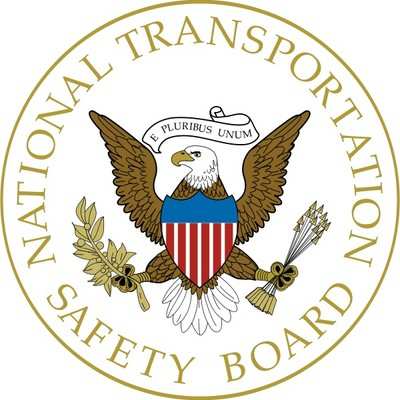Pilot Read Back The Altimeter Setting Correctly, And That Was The Last Transmission From The Airplane
Location: Beaufort, NC Accident Number: ERA22LA120
Date & Time: February 13, 2022, 14:02 Local Registration: N79NX
Aircraft: Pilatus Aircraft Ltd PC-12/47E Injuries: 8 Fatal
Flight Conducted Under: Part 91: General aviation - Personal

On February 13, 2022, about 1402 eastern standard time, a Pilatus PC-12, N79NX, was destroyed when it was involved in an accident near Beaufort, North Carolina. The commercial pilot, student pilot, and 6 passengers were fatally injured. The airplane was operated as a Title 14 Code of Federal Regulations Part 91 personal flight.
The airplane departed Pitt-Greenville Airport (PGV), Greenville, North Carolina, about 1235, and landed at Hyde County Airport (7W6), Engelhard, North Carolina, at 1255. Then, the airplane departed runway 29 from 7W6, about 1335.
After departure, the pilot contacted air traffic control, reported they were going to level off at 3,500 ft mean sea level (msl), and requested visual flight rules (VFR) flight following as well as an instrument flight rules (IFR) clearance into Michael J. Smith Field Airport (MRH), Beaufort, North Carolina. At 1338, the controller advised the pilot that nearby restricted airspace was active, and the pilot confirmed that they would remain clear of the airspace and fly to the east. At 1341, the controller called the pilot and indicated that they were about to enter the restricted airspace. After multiple calls with no response from the pilot, the controller instructed the military aircraft in the restricted airspace to remain above 4,000 ft msl. At 1349, the pilot called the controller and requested the RNAV approach to runway 26 but was denied the request because of the active restricted airspace. Furthermore, the controller queried the pilot as to why he did not respond to the earlier radio calls,
and the pilot responded that he “was trying to get out” and was unable to receive the radio transmissions. The controller offered an approach to runway 8 or runway 3, and the pilot chose runway 8.
At 1352, the controller reported that the restricted airspace was not active anymore and asked if the pilot wanted the RNAV approach to runway 26 instead. The pilot responded that he would appreciate that, and the controller cleared the pilot direct to CIGOR, the initial approach fix for the RNAV 26 approach. At 1355, the controller called the airplane and asked to verify if they were direct to CIGOR because the airplane was still on a southwesterly heading. The pilot responded “roger” and the controller said the airplane could proceed direct to CIGOR, to cross the waypoint at or above 1,900 ft msl and was cleared for the runway 26 RNAV approach. The pilot read back the instructions correctly and then at 1358, the controller contacted the airplane and issued a heading to CIGOR, but then indicated the airplane was “correcting now.”
At 1358:46, the controller called the pilot and issued the local altimeter setting because the airplane was at 1,700 ft msl and was supposed to maintain 1,900 ft msl. The pilot read back the altimeter setting correctly, and that was the last transmission from the airplane. At 1401, the controller called the airplane and asked what altitude it was at because the airplane was at 4,700 ft msl and climbing quickly. There was no response. Radar contact was lost with the airplane at 1402 and an ALNOT was issued at 1429. Throughout the communication with air traffic control, there were no distress calls or a declaration of emergency from the airplane.
The airplane impacted the Atlantic Ocean and was located by the US Coast Guard 3 miles offshore in about 60 ft of water. Dive crews recovered an ELT and a Light Data Recorder (LDR). The LDR was sent to the NTSB Recorders Laboratory for data download. According to Federal Aviation Administration (FAA) airman records, the pilot held a commercial pilot certificate with ratings for airplane multiengine land, airplane single-engine land, and instrument airplane. In addition, he held a ground instructor certificate and held a mechanic certificate for airframe and powerplant. His most recent second-class medical certificate was issued June 28, 2021. At that time, he reported 3,000 hours of flight experience.
According to FAA airman records, the passenger seated in the right seat held a student pilot certificate. His most recent third-class medical certificate was issued on July 6, 2021, and at that time he reported 20 hours of flight experience. An examination of the wreckage is pending recovery.
 Aero-News: Quote of the Day (12.07.25)
Aero-News: Quote of the Day (12.07.25) ANN's Daily Aero-Linx (12.07.25)
ANN's Daily Aero-Linx (12.07.25) NTSB Final Report: Lafferty Jack Sea Rey
NTSB Final Report: Lafferty Jack Sea Rey Classic Aero-TV: The B29 SuperFortress Doc - History in Flight
Classic Aero-TV: The B29 SuperFortress Doc - History in Flight Airborne 12.08.25: Samaritans Purse Hijack, FAA Med Relief, China Rocket Fail
Airborne 12.08.25: Samaritans Purse Hijack, FAA Med Relief, China Rocket Fail



